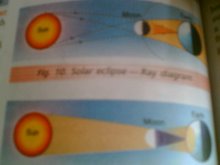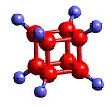There exists a great diversity and complexity among the microorganisms.
5 Groups:
(i)Bacteria
(ii)Protozoa
(iii)Algae
(iv)Fungi
(v)Viruses
Monday, 16 May 2011
significance of lactobacillus in the formation of curd
What is the significance of lactobacillus in the formation of curd?
Lactobacillus is a kind of bacteria which can convert a sugar into an alcohol and then into an acid by means of anaerobic respiration.
Milk contains a sugar called lactose, a disaccharide (compound sugar) made by the glycosidic bonding between glucose and glactose (monosaccharides).
When milk is heated to a temperature of 30-40 degrees centigrade and a small amount of old curd added to it, the lactobacillus in that curd sample gets activated and multiplies. These convert the lactose into lactic acid, which imparts the sour taste to curd.
Lactobacillus is a kind of bacteria which can convert a sugar into an alcohol and then into an acid by means of anaerobic respiration.
Milk contains a sugar called lactose, a disaccharide (compound sugar) made by the glycosidic bonding between glucose and glactose (monosaccharides).
When milk is heated to a temperature of 30-40 degrees centigrade and a small amount of old curd added to it, the lactobacillus in that curd sample gets activated and multiplies. These convert the lactose into lactic acid, which imparts the sour taste to curd.
Subscribe to:
Comments (Atom)





























